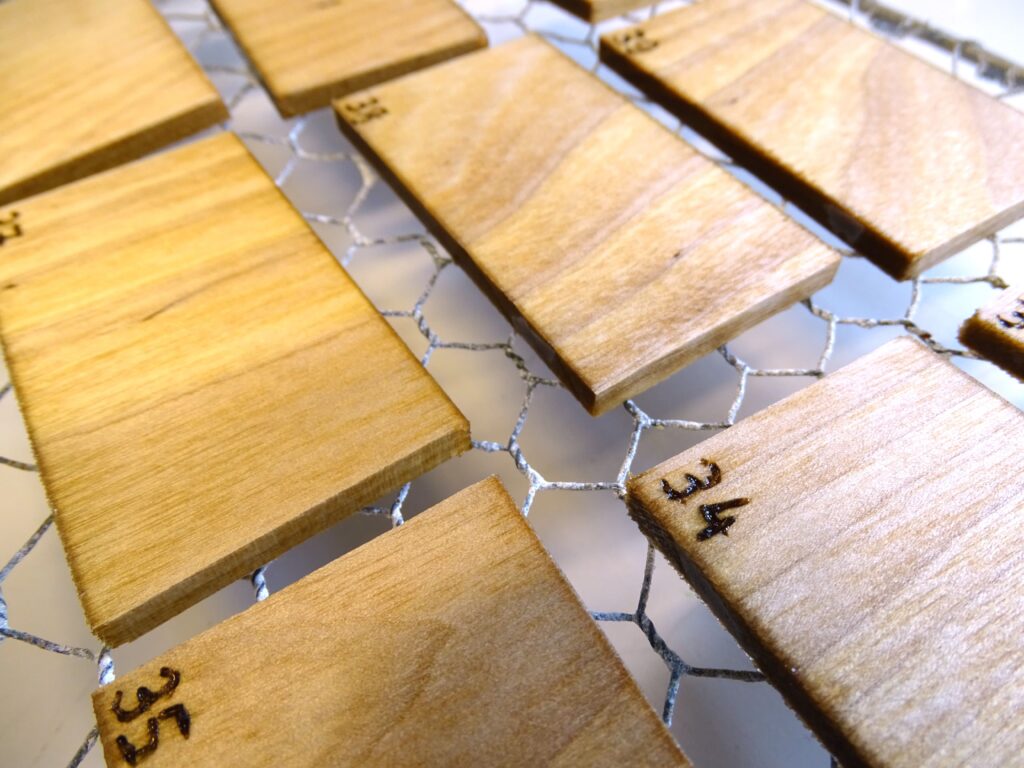
Small wood samples prepared for Brinell hardness testing. Photo: Veronika Zeller, Holzforschung Austria
The main purpose of bark in the living tree is to protect the wood surface from the damaging influence of UV light, excessive heat or microbiological attack and can therefore be considered nature’s coating for wood. While using solid bark on wood products such as plywood might be tricky, it makes perfect sense to use bark-based components as additives and fillers for wood coatings, as these are synthesized by nature for exactly that purpose. These include bark-based polyphenols with antioxidative and antimicrobial properties as well as cellulose nanofibrils (CNF).
Sustainable coatings for wood products
While wood itself is inherently a bio-based product, coatings required to protect the wood surface are still often petrol based. Bio-based alternatives are already being developed, but the aim of having a bio-based content of ≥95% while maintaining the required mechanical properties for high-demanding applications is still challenging.
Together with our company partner Adler Werk Lackfabrik, the largest wood coatings producer in Austria, we are developing coatings for our partner and use case provider Metsä Wood. We aim to use bark derived CNF to improve the mechanical performance of a bio-based coating for plywood used heavy-duty applications such as transportation (e.g. flooring of ships, trains, trailers etc). Currently, phenol-formaldehyde impregnated overlays are used for this purpose. However, formaldehyde poses a huge problem for workers safety and should therefore be avoided. The coating of transportation plywood must fulfil certain standards regarding hardness and resistance to wear and tear, quantified by abrasion and scratch resistance.
Improving mechanical properties of bio-based coatings
To assess the influence of CNFs on the mechanical performance of bio-based coatings, several coating formulations based on bio-based polymers are being prepared. CNF derived from softwood bark are added in the form of a paste at different concentrations and in conjunction with other bio-based additives, such as olive stone powder and soy lecithin. The resulting mixtures are then applied to different substrates, such as glass and birch plywood and assessed for their mechanical properties, including Brinell Hardness, abrasion and scratch resistance. To better understand the interaction of the CNF with the coating matrix, we use scanning electron microscopy as well as a confocal laser scanning microscopy for fluorescence imaging. The experiments are still ongoing, with the target abrasion resistance and Brinell hardness proving to be a challenge while the necessary scratch resistance has already been achieved.
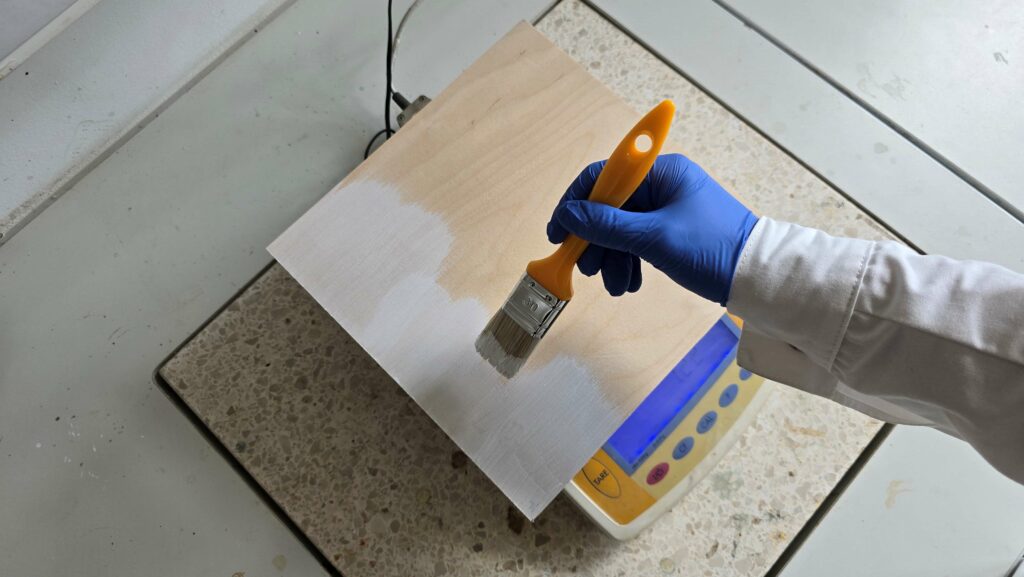
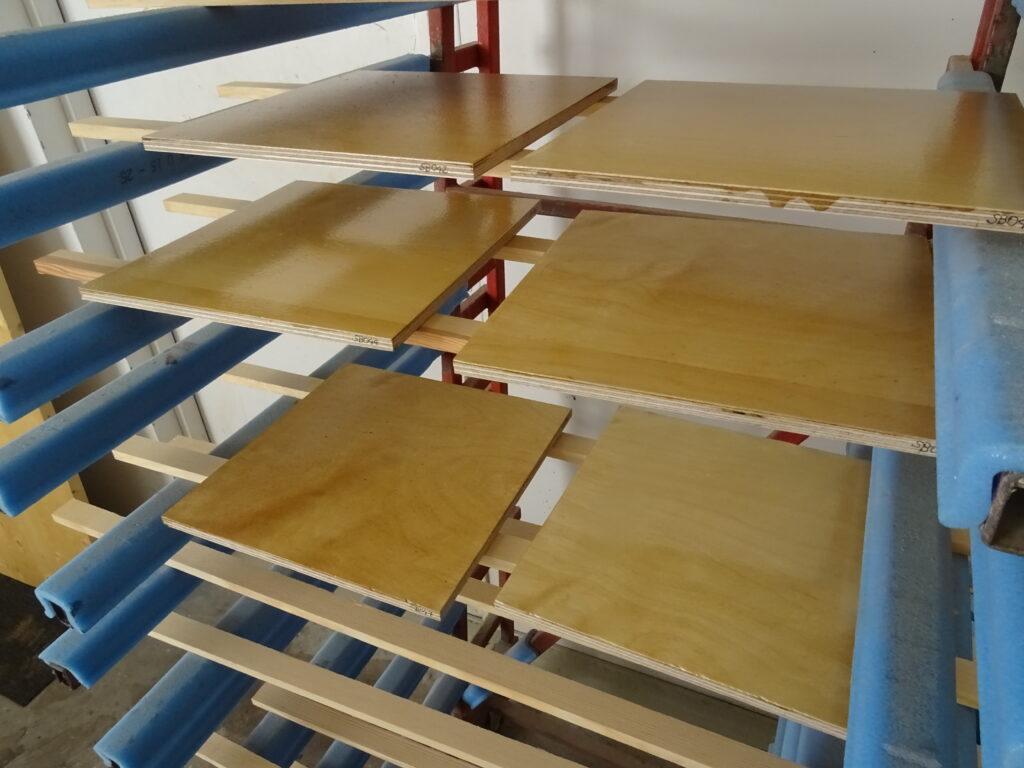
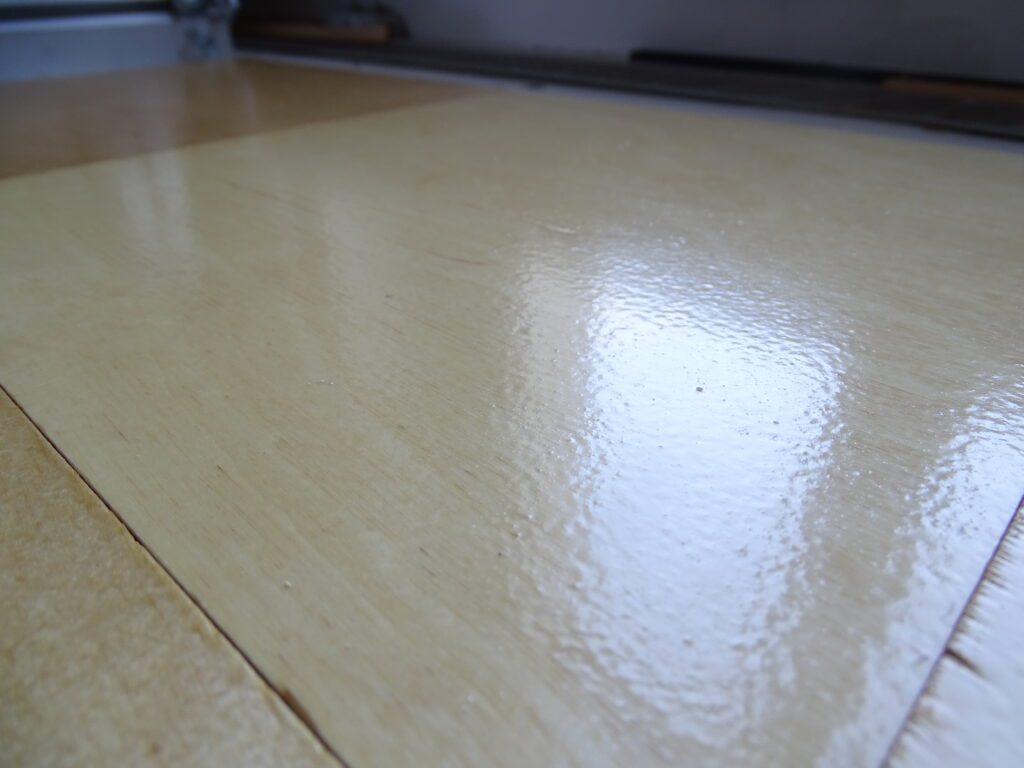
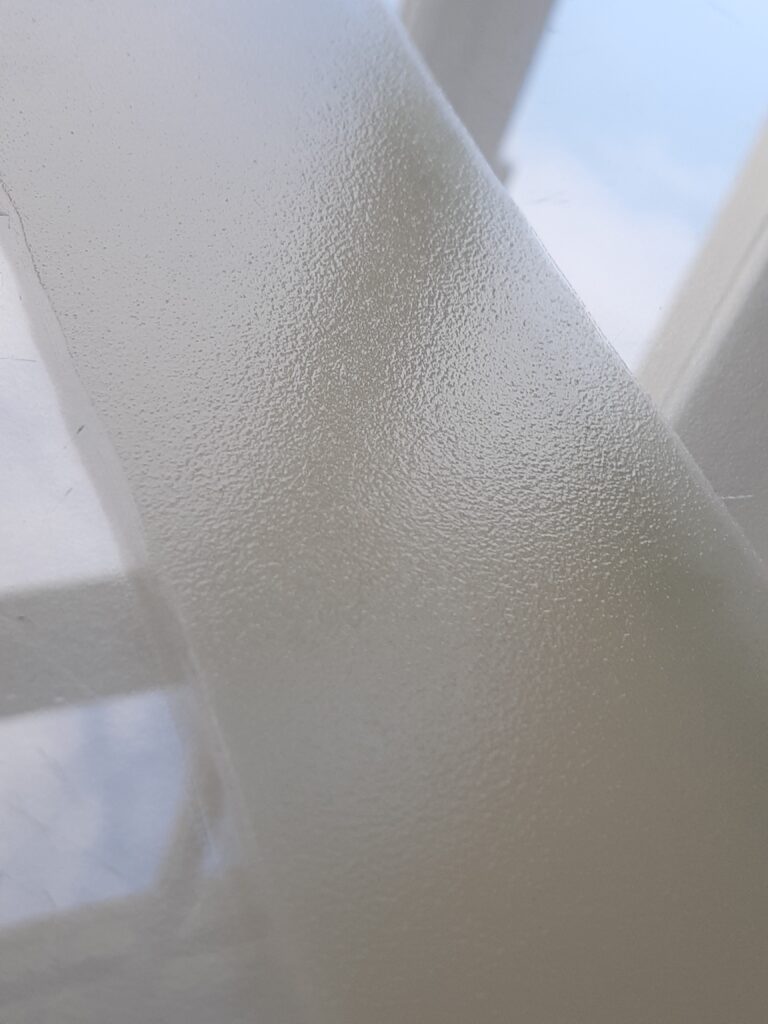
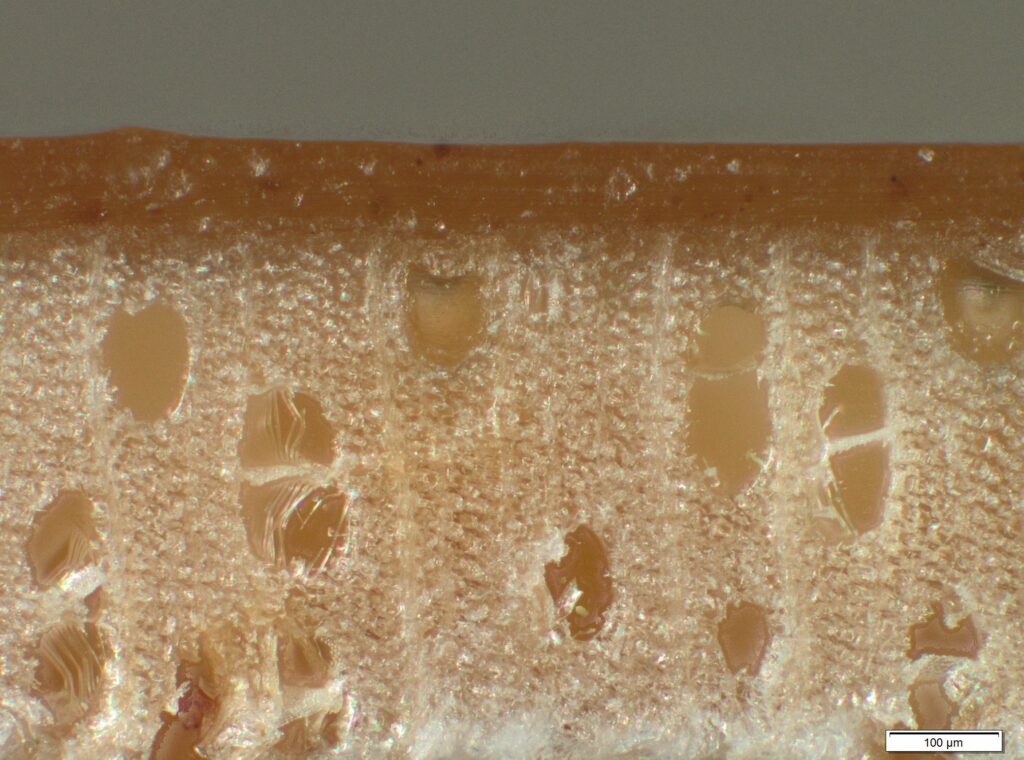
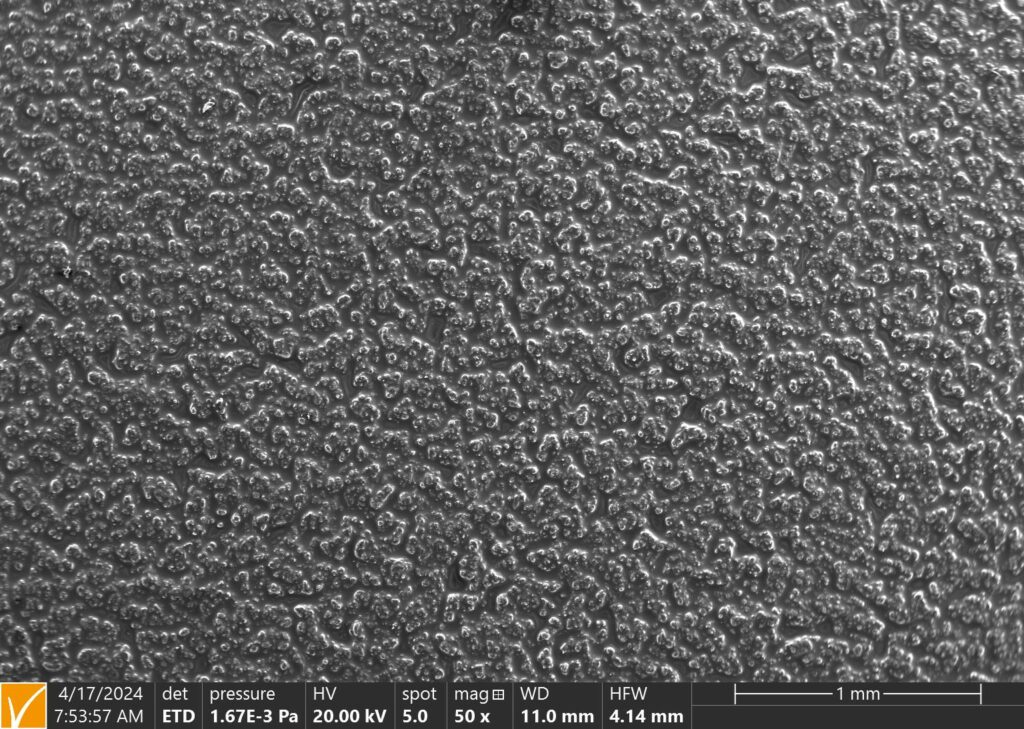
1. Application of bio-based coating on a test panel. 2. Coated plywood samples on the drying rack. 3. Gloss of a coated test panel. 4. Bio-based coating applied on a glass slide. 5. Cross-section of coated plywood sample for measurement of dry film thickness. 6. SEM- image showing the structure of a coating with high nanocellulose content. Photos: Veronika Zeller, Holzforschung Austria
Like oil and water
Even though the general trend regarding coatings is moving towards waterborne coatings, organic coating systems are tested because of their availability with higher bio-based content and superior performance. But they pose an additional challenge: the water-based CNF-paste is not soluble in the coating matrix and forms little droplets like water does when added to oil. The use of emulsifiers such as soy lecithin improves the distribution of the CNF in the coating but does not improve the mechanical properties of the finished product. To improve compatibility, first experiments modifying the surface of the CNFs have been performed, with the results indicating better dispersibility of the modified CNFs in the coating matrix.
The results from our coatings are looking very promising so far. However, the high abrasion resistance required for this use case is still a major challenge, and further steps are currently taken to overcome it. Nevertheless, we are confident that we will develop coatings with 95% bio-based content that will fulfil the required properties by the end of this project.

Veronika Zeller, WP4
Veronika Zeller works at Holzforschung Austria as a researcher. She plans and coordinates experimental work with partners. Within the SuperBark project, Holzforschung Austria focuses on the development of sustainable wood coatings.
To learn more about the work in WP4, contact Veronika Zeller at v.zeller@holzforschung.at or WP4 leader Boris Forsthuber at b.forsthuber@holzforschung.at.